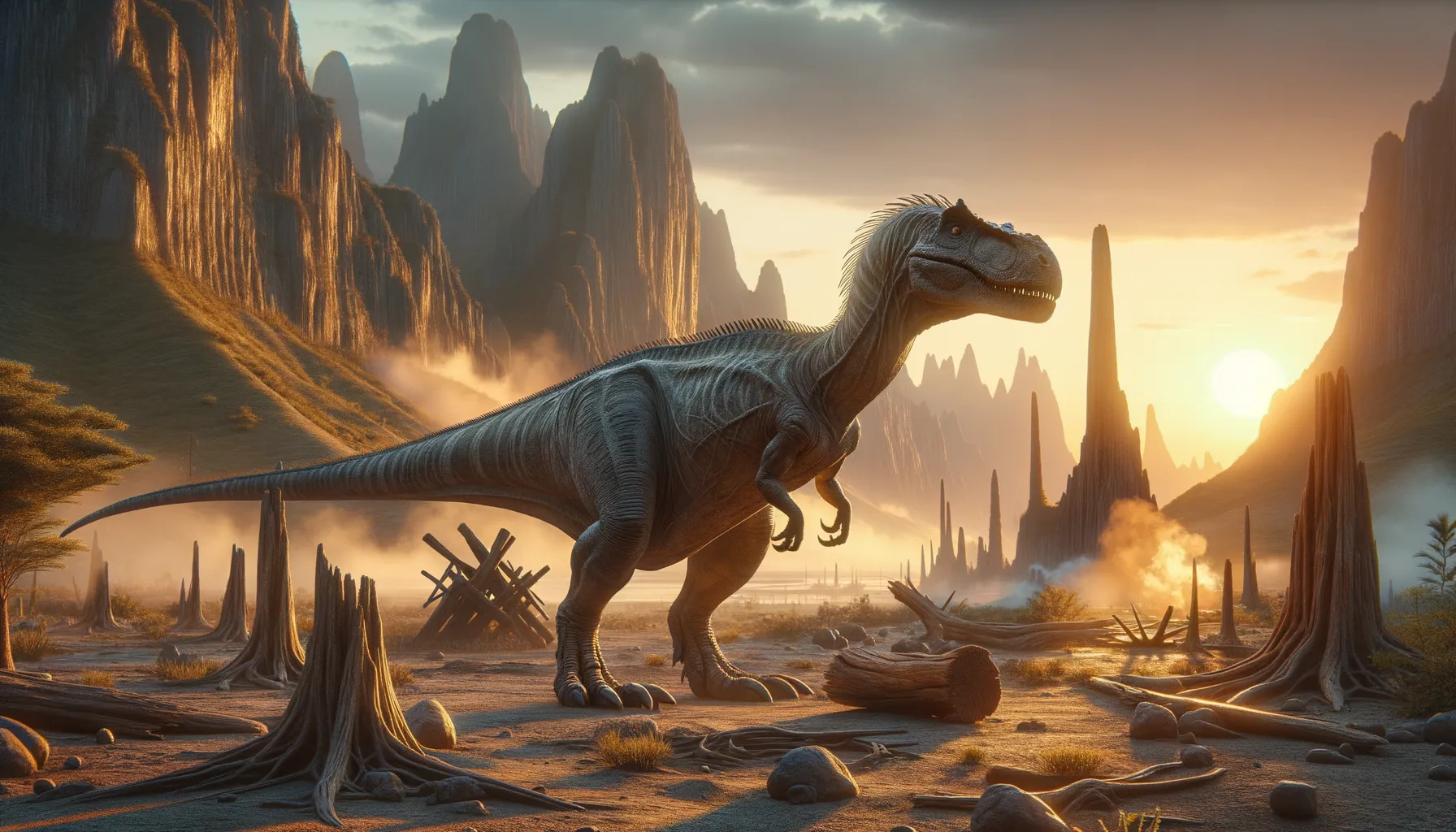
Enigmosaurus
A mystery from the land of giants.
Period
Cretaceous
Length
Measured about 7 meters long.
Height
Stood around 2 meters tall.
Weight
Approximately 450 kilograms.
Enigmosaurus was an intriguing theropod dinosaur known for its unique pelvic structure. It lived during the Late Cretaceous period in what is now Mongolia. This dinosaur is often studied for its unusual anatomy, which provides insights into the diversity of theropod species. Although not much is known about its exact behavior, Enigmosaurus represents an important piece of the puzzle in understanding dinosaur evolution and their varied adaptations.
Diet
Enigmosaurus likely had an omnivorous diet. Its feeding habits may have included both plants and small animals, allowing it to survive in diverse environments. This flexibility in diet was advantageous in its dynamic and changing habitat.
Hunting
While the specific hunting behavior of Enigmosaurus remains unclear, it may have used stealth and its environment to glean small prey. It's believed to have been opportunistic, feeding on available resources rather than pursuing large hunts.
Environmental challenges
Enigmosaurus faced various environmental challenges, including fluctuations in climate and availability of food resources. Its habitat may have included arid and semi-dry landscapes, demanding adaptability for survival. Competition with other species for resources would have also posed challenges. Fossil evidence suggests that surviving in such dynamic ecosystems required flexible behavior.
Speed
Moderate, not built for fast sprints.
Lifespan
Estimated around 20 to 30 years.
First discovery
Discovered in the 1980s in Mongolia.
Fun Facts
- Enigmosaurus was a theropod dinosaur that lived during the late Cretaceous period, about 70 million years ago.
- This dinosaur is known from only a partial skeleton, leaving much about its appearance and behavior a mystery.
- The name 'Enigmosaurus' means 'mystery lizard,' reflecting the puzzling nature of its incomplete fossils.
- Enigmosaurus was discovered in what is now Mongolia, providing insight into the diverse dinosaur fauna of Asia.
- Despite limited fossils, Enigmosaurus is believed to have been a herbivore with unusual hand and arm structures.
- Some researchers think Enigmosaurus may have been closely related to Therizinosaurus, known for its long claws.
- Enigmosaurus adds to our understanding of the variety and evolution of theropod dinosaurs.
Growth and Development
The development of Enigmosaurus likely followed the typical theropod growth trajectory. It would have hatched from eggs and gone through a rapid growth phase as a juvenile. As it matured, changes in its morphology would have occurred, aligning with the needs of an adult dinosaur. Such growth phases were crucial for adapting to environmental pressures and predator threats.
Habitat
Enigmosaurus inhabited regions that are now part of Mongolia, characterized by varied ecosystems. Its habitat during the Cretaceous period included both forested areas and open landscapes. This diversity of environments provided opportunities for varied feeding and living conditions. The adaptability of Enigmosaurus would have been key in exploiting these diverse habitats.
Interaction with other species
Enigmosaurus likely interacted with various species within its environment, including other herbivores and carnivores. These interactions could range from competition for resources to predator-prey dynamics. Understanding its niche helps researchers determine the ecological balance during its era. Fossil evidence sometimes reveals traces of these interactions through shared fossil sites or markings on bones.
Natural lifespan
Its natural lifespan was likely around 20 to 30 years.
Reproduction
Enigmosaurus, like many dinosaurs, laid eggs, which suggests it likely engaged in some form of nesting behavior. It could have exhibited parental care post-hatching, as seen in some other theropod dinosaurs. Reproductive strategies might have varied, adapting to environmental circumstances and survival needs.
Social behaviour
The social behavior of Enigmosaurus remains speculative, though it's possible it exhibited both solitary and group behaviors. Being part of a group could offer protection and cooperative feeding strategies. However, individual behavior might also have been common, particularly in the face of limited resources or internal competition.
Fossil locations
Fossils of Enigmosaurus have been predominantly found in Mongolia, specifically in deposits from the Late Cretaceous period. These discoveries provide valuable insights into the geographic distribution and evolution of theropod dinosaurs. The conditions of these fossil sites help paleontologists reconstruct ancient environments. The preservation of these fossils allows for continued study and understanding of its ecology.
